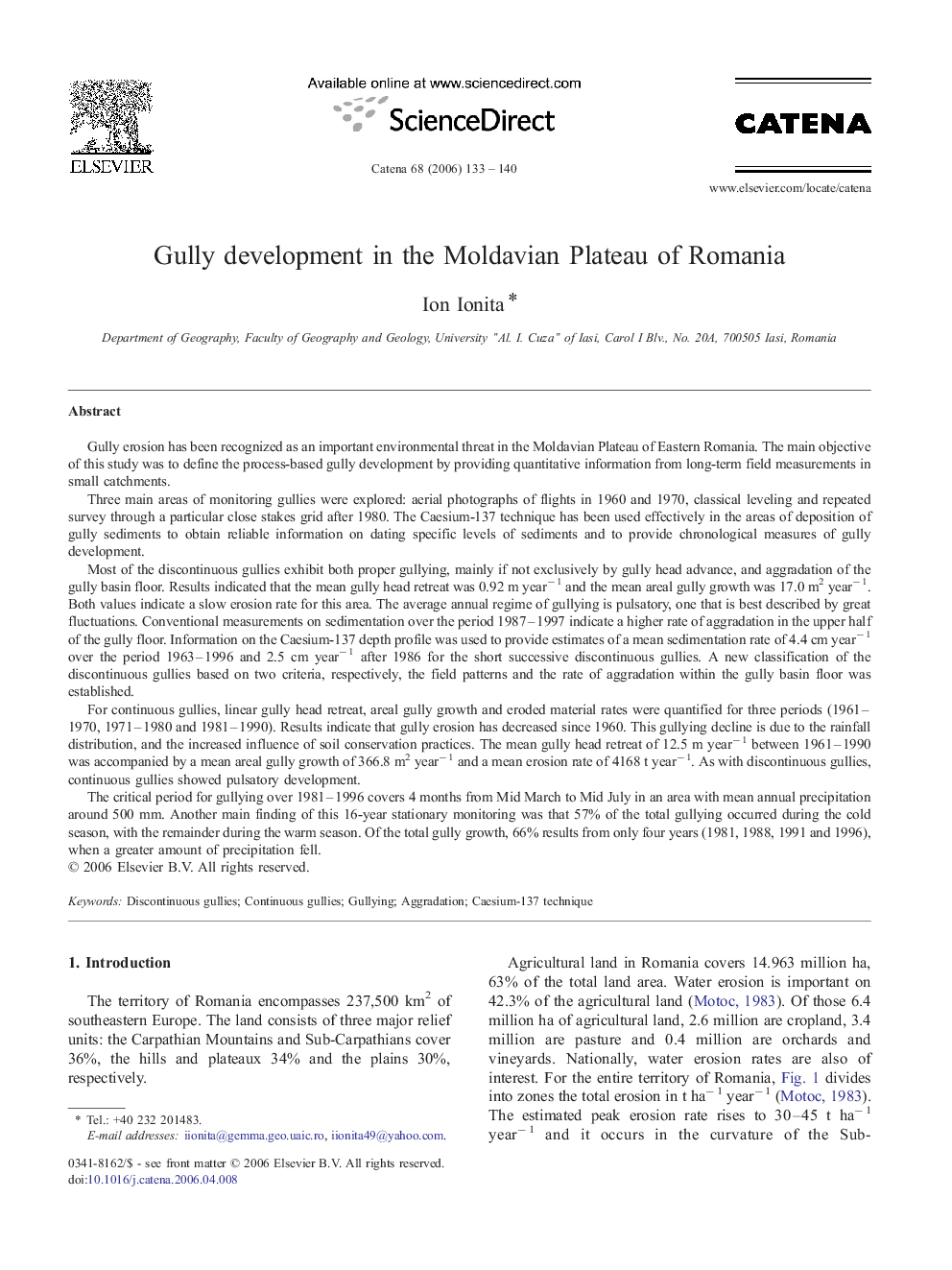| کد مقاله | کد نشریه | سال انتشار | مقاله انگلیسی | نسخه تمام متن |
|---|---|---|---|---|
| 4572664 | 1629267 | 2006 | 8 صفحه PDF | دانلود رایگان |

Gully erosion has been recognized as an important environmental threat in the Moldavian Plateau of Eastern Romania. The main objective of this study was to define the process-based gully development by providing quantitative information from long-term field measurements in small catchments.Three main areas of monitoring gullies were explored: aerial photographs of flights in 1960 and 1970, classical leveling and repeated survey through a particular close stakes grid after 1980. The Caesium-137 technique has been used effectively in the areas of deposition of gully sediments to obtain reliable information on dating specific levels of sediments and to provide chronological measures of gully development.Most of the discontinuous gullies exhibit both proper gullying, mainly if not exclusively by gully head advance, and aggradation of the gully basin floor. Results indicated that the mean gully head retreat was 0.92 m year− 1 and the mean areal gully growth was 17.0 m2 year− 1. Both values indicate a slow erosion rate for this area. The average annual regime of gullying is pulsatory, one that is best described by great fluctuations. Conventional measurements on sedimentation over the period 1987–1997 indicate a higher rate of aggradation in the upper half of the gully floor. Information on the Caesium-137 depth profile was used to provide estimates of a mean sedimentation rate of 4.4 cm year− 1 over the period 1963–1996 and 2.5 cm year− 1 after 1986 for the short successive discontinuous gullies. A new classification of the discontinuous gullies based on two criteria, respectively, the field patterns and the rate of aggradation within the gully basin floor was established.For continuous gullies, linear gully head retreat, areal gully growth and eroded material rates were quantified for three periods (1961–1970, 1971–1980 and 1981–1990). Results indicate that gully erosion has decreased since 1960. This gullying decline is due to the rainfall distribution, and the increased influence of soil conservation practices. The mean gully head retreat of 12.5 m year− 1 between 1961–1990 was accompanied by a mean areal gully growth of 366.8 m2 year− 1 and a mean erosion rate of 4168 t year− 1. As with discontinuous gullies, continuous gullies showed pulsatory development.The critical period for gullying over 1981–1996 covers 4 months from Mid March to Mid July in an area with mean annual precipitation around 500 mm. Another main finding of this 16-year stationary monitoring was that 57% of the total gullying occurred during the cold season, with the remainder during the warm season. Of the total gully growth, 66% results from only four years (1981, 1988, 1991 and 1996), when a greater amount of precipitation fell.
Journal: CATENA - Volume 68, Issues 2–3, 31 December 2006, Pages 133–140